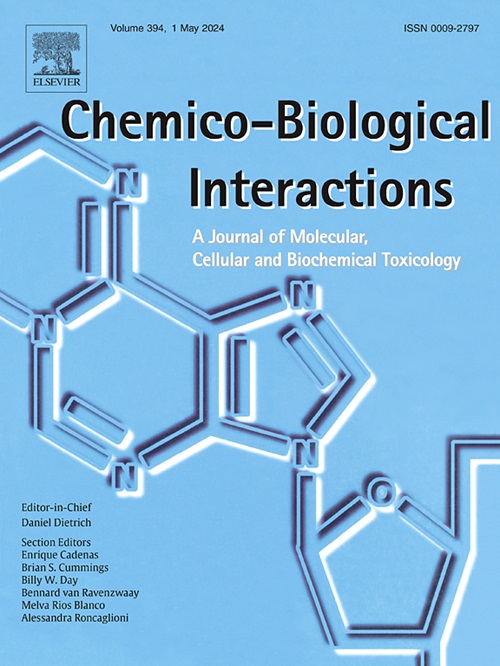Multiple mechanisms of action of a triazole-derived salt against Leishmania amazonensis: Apoptosis-like death and autophagy
IF 4.7
2区 医学
Q1 BIOCHEMISTRY & MOLECULAR BIOLOGY
引用次数: 0
Abstract
Current chemotherapy for leishmaniasis faces significant limitations due to high toxicity, prolonged treatment regimens, and increasing parasite resistance, highlighting the urgent need for innovative treatment strategies. This study aimed to evaluate the in vitro activity of 1,2,3-triazole derivatives against promastigotes and amastigotes of Leishmania amazonensis, as well as their cytotoxicity in murine macrophages. Additionally, we investigated the mechanism of parasite death through different biochemical and cellular indicators of cell death parameters. Our results underscored the importance of the salt form, as the neutral form showed no inhibition of parasite growth. In contrast, the triazole-derived salt demonstrated promising selective index (SI = 34.28) and antileishmanial activity (IC50 = 0.13 μM and IC50 = 2.06 μM against promastigote and amastigote forms, respectively), proving more active than miltefosine, the standard drug. Regarding the mode of action of the triazole-derived salt, this compound induced significant mitochondrial alterations in the parasite, characterized by an increase in mitochondrial membrane potential (ΔΨm), elevated levels of total and mitochondrial Reactive Oxygen Species (ROS), and lipid body accumulation in the cytoplasm. Treatment with triazole-derived salt also produced several ultrastructural, biochemical, and cellular changes in the promastigote forms, such as the occurrence of apoptosis-like death, including cell shrinkage and reduction in length, as well as exposure of phosphatidylserine in the outer leaflet of the plasma membrane and marked cell cycle interruption, in addition to DNA fragmentation. Despite MDC positive and the presence of membrane-bound vacuoles resembling autophagosomal structures observed by TEM analysis, autophagy is not a predominant process, with severe mitochondrial damage emerging as the primary event leading to parasite death. These findings demonstrate the promising antileishmanial potential of the triazole-derived salt, with its effect on multiple targets in parasite cells. Moreover, the association of the active compound with miltefosine showed an additive effect in treating L. amazonensis-infected macrophages. Altogether, these results highlight the therapeutic potential of the evaluated salt and support further studies to assess its in vivo efficacy in a murine model of cutaneous leishmaniasis.
三唑衍生盐抗亚马逊利什曼原虫的多种作用机制:细胞样死亡和自噬。
目前利什曼病的化疗由于毒性高、治疗方案延长和寄生虫耐药性增加而面临重大限制,这突出表明迫切需要创新的治疗策略。本研究旨在评价1,2,3-三唑衍生物对亚马逊利什曼原虫原鞭毛菌和无尾鞭毛菌的体外活性及其对小鼠巨噬细胞的细胞毒性。此外,我们还通过细胞死亡参数的不同生化和细胞指标探讨了寄生虫死亡的机制。我们的结果强调了盐形式的重要性,因为中性形式没有抑制寄生虫的生长。相比而言,三唑衍生盐表现出良好的选择性指数(SI = 34.28)和抗利什曼原虫活性(IC50 = 0.13 μM和IC50 = 2.06 μM),证明其活性高于标准药物米替福辛。关于三唑衍生盐的作用方式,该化合物在寄生虫中诱导了显著的线粒体改变,其特征是线粒体膜电位增加(ΔΨm),总活性氧和线粒体活性氧(ROS)水平升高,以及细胞质中的脂质体积累。三唑衍生盐的处理还产生了promastigote形式的几种超微结构、生化和细胞变化,例如发生细胞凋亡样死亡,包括细胞收缩和长度减少,以及质膜外小叶磷脂酰丝氨酸暴露和明显的细胞周期中断,此外还有DNA断裂。尽管通过透射电镜分析观察到MDC阳性,并且存在类似自噬体结构的膜结合液泡,但自噬不是主要过程,严重的线粒体损伤是导致寄生虫死亡的主要事件。这些发现证明了三唑衍生盐具有抗利什曼原虫的潜力,它对寄生虫细胞中的多个靶点都有作用。此外,活性化合物与米替福辛的结合对亚马逊乳杆菌感染的巨噬细胞具有加性作用。总之,这些结果突出了所评估盐的治疗潜力,并支持进一步研究评估其在小鼠皮肤利什曼病模型中的体内疗效。
本文章由计算机程序翻译,如有差异,请以英文原文为准。
求助全文
约1分钟内获得全文
求助全文
来源期刊
CiteScore
7.70
自引率
3.90%
发文量
410
审稿时长
36 days
期刊介绍:
Chemico-Biological Interactions publishes research reports and review articles that examine the molecular, cellular, and/or biochemical basis of toxicologically relevant outcomes. Special emphasis is placed on toxicological mechanisms associated with interactions between chemicals and biological systems. Outcomes may include all traditional endpoints caused by synthetic or naturally occurring chemicals, both in vivo and in vitro. Endpoints of interest include, but are not limited to carcinogenesis, mutagenesis, respiratory toxicology, neurotoxicology, reproductive and developmental toxicology, and immunotoxicology.

 求助内容:
求助内容: 应助结果提醒方式:
应助结果提醒方式:


